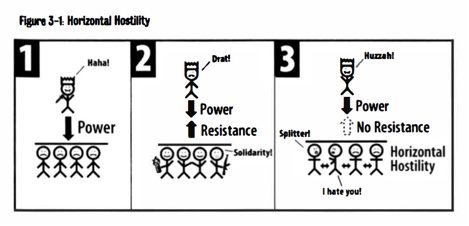
by DGR News Service | Jun 21, 2014 | Gender, Repression at Home
By Max Wilbert / Deep Green Resistance
Despite the seeming popularity of environmental and social justice work in the modern world, we’re not winning. We’re losing. In fact, we’re losing really badly. [1]
Why is that?
One reason is because few popular strategies pose real threats to power. That’s not an accident: the rules of social change have been clearly defined by those in power. Either you play by the rules — rules which don’t allow you to win — or you break free of the rules, and face the consequences.
Play By The Rules, or Raise the Stakes
We all know the rules: you’re allowed to vote for either one capitalist or the other, vote with your dollars,[2] write petitions (you really should sign this one), you can shop at local businesses, you can eat organic food (if you can afford it), and you can do all kinds of great things!
But if you step outside the box of acceptable activism, you’re asking for trouble. At best, you’ll face ridicule and scorn. But the real heat is reserved for movements that pose real threats. Whether broad-based people’s movements like Occupy or more focused revolutionary threats like the Black Panthers, threats to power break the most important rule they want us to follow: never fight back.
State Tactic #1: Overt Repression
Fighting back – indeed, any real resistance – is sacrilegious to those in power. Their response is often straightforward: a dozen cops slam you to the ground and cuff you; “less-lethal” weapons cover the advance of a line of riot police; the sharp report of SWAT team’s bullets.
This type of overt repression is brutally effective. When faced with jail, serious injury, or even death, most don’t have the courage and the strategy to go on. As we have seen, state violence can behead a movement.
That was the case with Fred Hampton, an up-and-coming Black Panther Party leader in Chicago, Illinois. A talented organizer, Hampton made significant gains for the Panthers in Chicago, working to end violence between rival (mostly black) gangs and building revolutionary alliances with groups like the Young Lords, Students for A Democratic Society, and the Brown Berets. He also contributed to community education work and to the Panther’s free breakfast program.
These activities could not be tolerated by those in power: they knew that a charismatic, strategic thinker like Hampton could be the nucleus of revolution. So, they decided to murder him. On December 4, 1969, an FBI snitch slipped Hampton a sedative. Chicago police and FBI agents entered his home, shot and killed the guard, Mark Clark, and entered Hampton’s room. The cops fired two shots directly into his head as he lay unconscious. He was 21 years old.
The Occupy Movement, at its height, posed a threat to power by making the realities of mass anti-capitalism and discontent visible, and by providing physical focal points for the dissent that spawns revolution. While Occupy had some issues (such as the difficulties of consensus decision-making and generally poor responses to abusive behavior inside camps), the movement was dynamic. It claimed physical space for the messy work of revolution to happen, and represented the locus of a true threat.
The response was predictable: the media assaulted relentlessly, businesses led efforts to change local laws and outlaw encampments, and riot police were called in as the knockout punch. It was a devastating flurry of blows, and the movement hasn’t yet recovered. (Although many of the lessons learned at Occupy may serve us well in the coming years).
State Tactic #2: Covert Repression
Violent repression is glaring. It gets covered in the news, and you can see it on the streets. But other times, repression isn’t so obvious. A recent leaked document from the private security and corporate intelligence firm Strategic Forecasting, Inc. (better known as STRATFOR) contained this illustrative statement:
Most authorities will tolerate a certain amount of activism because it is seen as a way to let off steam. They appease the protesters by letting them think that they are making a difference — as long as the protesters do not pose a threat. But as protest movements grow, authorities will act more aggressively to neutralize the organizers.
The key word is neutralize: it represents a more sophisticated strategy on behalf of power, a set of tactics more insidious than brute force.
Most of us have probably heard about COINTELPRO (shorthand for Counter-Intelligence Program), a covert FBI program officially underway between 1956 and 1971. COINTELPRO mainly targeted socialists and communists, black nationalists, Civil Rights groups, the American Indian Movement, and much of the left, from Quakers to Weathermen. The FBI used four main techniques to undermine, discredit, eliminate, and otherwise neutralize these threats:
- Force
- Harassment (subpoenas, false accusations, discriminatory enforcement of taxation, etc.)
- Infiltration
- Psychological warfare
How can we become resilient to these threats? Perhaps the first step is to understand them; to internalize the consequences of the tactics being used against us.
The JTRIG Leaks
On February 24 of this year, Glenn Greenwald released an article detailing a secret National Security Agency (NSA) unit called JTRIG (Joint Threat Research Intelligence Group). The article, which sheds new light on the tactics used to suppress social movements and threats to power, is worth quoting at length:
Among the core self-identified purposes of JTRIG are two tactics: (1) to inject all sorts of false material onto the internet in order to destroy the reputation of its targets; and (2) to use social sciences and other techniques to manipulate online discourse and activism to generate outcomes it considers desirable. To see how extremist these programs are, just consider the tactics they boast of using to achieve those ends: “false flag operations” (posting material to the internet and falsely attributing it to someone else), fake victim blog posts (pretending to be a victim of the individual whose reputation they want to destroy), and posting “negative information” on various forums.
It shouldn’t come as a total surprise that those in power use lies, manipulation, false information, fake identities, and “manipulation [of] online discourse” to further their ends. They always fight dirty; it’s what they do. They never fight fair, they can never allow truth to be shown, because to do so would expose their own weakness.
As shown by COINTELPRO, this type of operation is highly effective at neutralizing threats. Snitchjacketing and divisive movement tactics were used widely during the COINTELPRO era, and encouraged activists to break ties, create rivalries, and vie against one another. In many cases, it even led to violence: prominent, good hearted activists would be labeled “snitches” by agents, and would be isolated, shunned, and even killed.
As a friend put it,
“By encouraging horizontal, crowdsourced repression, activists’ focus is shifted safely away from those in power and towards each other.”

Are Activists Targeted?
Some organizations have ideas so revolutionary, so incendiary that they pose a threat all by themselves, simply by existing.
Deep Green Resistance is such a group. If these tactics are being used to neutralize activist groups, then Deep Green Resistance (DGR) seems a prime target. Proudly Luddite in character, DGR believes that the industrial way of life, the soil-destroying process known as agriculture, and the social system called civilization are literally killing the planet – at the rate of 200 species extinctions, 30 million trees, and 100 million tons of CO2 every day. With numbers like that, time is short.
With two key pieces of knowledge, the DGR strategy comes into focus. The first is that global industrial civilization will inevitably collapse under the weight of its own destructiveness. The second is that this collapse isn’t coming soon enough: life on Earth could very well be doomed by the time this collapse stops the accelerating destruction.
With these understandings, DGR advocates for a strategy to pro-actively dismantle industrial civilization. The strategy (which acknowledges that resisters will face fierce opposition from governments, corporations, and those who cling to modern life) calls for direct attacks on critical infrastructure – electric grids, fossil fuel networks, communications, etc. – with one goal: to shut down the global industrial economy. Permanently.
The strategy of direct attacks on infrastructure has been used in countless wars, uprisings, and conflicts because it is extremely effective. The same strategies are taught at military schools and training camps around the planet, and it is for this reason – an effective strategy – that DGR poses a real and serious threat to power. Of course, writing openly about such activities and then taking part in them would be stupid, which is why DGR is an “aboveground” organization. Our work is limited to building a culture of resistance (which is no easy feat: our work spans the range of activities from non-violent resistance to educational campaigns, community organizing, and building alternative systems) and spreading the strategies that we advocate in the hope that clandestine networks can pull off the dirty work in secret.
When I speak to veterans – hard-jawed ex-special forces guys – they say the strategy is good. It’s a real threat.
Threat Met With Backlash
That threat has not gone unanswered. In a somewhat unsurprising twist, given the information we’ve gone over already, DGR’s greatest challenges have not come from the government, at least not overtly. Instead, the biggest challenges have come from radical environmentalists and social justice activists: from those we would expect to be among our supporters and allies. The focal point of the controversy? Gender.
The conflict has a long history and deserves a few hours of discussion and reading, but here is the short version: DGR holds that female-only spaces should be reserved for females. This offends many who believe that male-born individuals (who later come to identify as female) should be allowed access to these spaces. It’s all part of a broader, ongoing disagreement between gender abolitionists (like DGR and others), who see gender as the cultural lattice of women’s oppression, and those who view gender as an identity that is beyond criticism.
(To learn more about the conflict, view Rachel Ivey’s presentation entitled The End of Gender.)
Due to this position, our organization has been blacklisted from speaking at various venues, our organizers have received threats of violence (often sexualized), and our participation in a number of struggles has been blocked – at the expense of the cause at hand.
A Case Study in JTRIG?
Much of the anti-DGR rhetoric has been extraordinary, not for passionate political disagreement, but for misinformation and what appears to be COINTELPRO-style divisiveness. Are we the victims of a JTRIG-style smear campaign?
On February 23 of this year, the Earth First! Newswire released an anonymous article attacking Deep Green Resistance. The main subject of the article was the ongoing debate over gender issues.
(Although perhaps debate is the wrong word in this case: Earth First! Newswire has published half a dozen vitriolic pieces attacking DGR. They seem to have an obsession. On the other hand, DGR has never used organizational resources or platforms to publish a negative comment about Earth First.)
Here are a few of the fabrications contained in the February 23 article:
- “Keith and Jensen [DGR co-founders] do not recognize the validity of traditionally marginalized struggles [like] Black Power.” (a wild, false claim, given the long and public history of anti-racist work and solidarity by those two. [3])
- DGR members have “outed” transgender people by posting naked photos of them. (Completely false not to mention obscene and offensive.[4])
- DGR is “allied with” gay-to-straight conversion camps. (The lies get ever more absurd. DGR has countless lesbian and gay members, including founding members. Lesbian and gay members are involved at every level of decision making in DGR.)
- DGR requires “genital checks” for new members. (I can’t believe we even have to address this – it’s a surreal accusation. It is, of course, a lie.)
If these claims weren’t so serious, they would be laughable. But lies like this are no laughing matter.
Here is one illustrative list of tactics from the JTRIG leaks:

“Crowdsourced Repression”
The timing of these events – the Earth First! Newswire article followed the very next day by Greenwald’s JTRIG article – is ironic. Of course, it made me think: are we the victims of a JTRIG-style character assassination? Or am I drawing conclusions where there are none to be drawn?
The campaigns against DGR do have many of the hallmarks of COINTELPRO-style repression. They are built on a foundation of political differences magnified into divisive hatred through paranoia and the spread of hearsay. In the 1960s and 70s, techniques that seem similar were used to create divisions within groups like the Black Panthers and the American Indian Movement.
Ultimately, these movements tore themselves apart in violence and suspicion; the powerful were laughing all the way to the bank. In many cases, we don’t even know if the FBI was involved; what is certain is that the FBI-style tactics – snitchjacketing, rumormongering, the sowing of division and hatred – were being adopted by paranoid activists.
In some ways, the truth doesn’t really matter. Whether these activists were working for the state or not, they served to destroy movements, alliances, and friendships that took decades or generations to build.
I’ll be clear: I don’t mean to claim that the “Letter Collective” (as the anonymous authors of the February 23 article named themselves) are agents of the state. To do so would be a violation of security culture. [5] Modern activists seem to have largely forgotten the lessons of COINTELPRO, and I am wary of forgetting those lessons myself. Snitchjacketing is a bad behavior, and we should have no tolerance for it unless there is substantive evidence.
But members of the “Letter Collective”, at the very least, have violated security culture by spreading rumors and unsubstantiated claims of serious misconduct. Good security culture practices preclude this behavior. In the face of JTRIG and the modern surveillance and repression state, careful validation of serious claims is the least that activists can do. Didn’t we learn this lesson in the 60s?
Divide and Conquer
By itself, verifying rumors before spreading them is a poor defense against the repression modern activists face. Instead, we must challenge divisiveness itself: one of the biggest threats to our success.
The 2011 STRATFOR leak included information about corporate strategies to neutralize activist and community movements. Essentially, STRATFOR advocates dividing movements into four character types: radicals, idealists, realists, and opportunists. These camps can then be dealt with summarily:
First, isolate the radicals. Second, “cultivate” the idealists and “educate” them into becoming realists. And finally, co-opt the realists into agreeing with industry. [6]
This is how movements are neutralized: those who should be allies are divided, infighting becomes rampant, and paranoia rules the roost. To combat these strategies, we must understand the danger they represent and how to counter them.
Fight Repression With Solidarity
We all want to win. We want to end capitalism, reverse ecological collapse, and build a culture in which social justice is fundamental. Many of us have different specific goals or strategies, but we must find similarities, overlaps, and areas where we can work together.
As Bob Ages, commenting on STRATFOR’s divide-and-conquer tactics, put it in a recent piece:
“Our response has to be the opposite; bridging divides, foster mutual understanding and solidarity, stand together come hell or high water.”
Many people across the left share 80% or more of their politics, and yet constructive criticism and mature discussion of disagreements is the exception, not the rule. We need more thoughtful behavior. Don’t spread rumors, don’t tear down other activists, and don’t forget who the real enemy is. Don’t waste your time fighting those who should be your allies – even if they are only partial allies. Let’s disagree, and let our disagreements help us learn more from each other and build alliances.
In the end, that’s our only chance of winning: together.
References
Max Wilbert lives in the Pacific Northwest, where he works to support indigenous resistance to industrial extraction projects, anti-racist initiatives, and radical feminist struggles as part of Deep Green Resistance. He makes his living as a writer and photographer, and can be contacted at max@maxwilbert.org.
From Dissident Voice
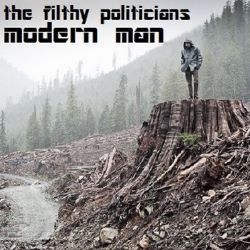
by DGR News Service | May 5, 2014 | Music & Art
By Max Wilbert / Deep Green Resistance Great Basin
Most popular music makes me sick. If it isn’t misogyny and objectification of women, it’s blatant materialism. Even music that doesn’t fit into popular oppression is likely to be completely vapid, empty of any soul, culture, or political meaning.
That’s why I’m so pleased with British Columbia-based hip-hop artist The Filthy Politicians. Their latest album, “The Modern Man”, is also their first full-length album, with eleven tracks, and it’s a great album.
The music is characterized by samples from popular songs, elegant mixing, and humble, intensely political lyrics that just about anyone can relate to. Dan Peters, the vocalist and producer, largely avoids the contrived feeling that some political music conveys; instead, his lyrics come across as personal. Most hip-hop fans will enjoy just about every track on the album.
The album starts off with a strong beat in “On The Level”, where Peters raps:
Everything about now is fucked and I’m tired of tip-toeing around it.
Other strong tracks include the title track, “Modern Man”, which critiques the modern lifestyle, “6am”, which looks at the alcohol-fueled lifestyle of the average 20-something, and “200 Species Every Day”, which follows a hypothetical duo of underground saboteurs dedicated to shutting down industrial civilization.
Yes, that’s really what the song is about. And it’s great.
The Filthy Politicians don’t have a website or bio online, but I did find this:
In a world held captive by empty plastic promises, Dan Peters of the filthy politicians is trying to figure out how it’s all come to this and what we might do about it. Beyond the shallow, token analysis and solutions offered up by the ones that continue to benefit from the destruction of our Mother Earth, the filthy politicians set out to take a deep look at an extreme situation and urge those with more human than machine left inside to respond accordingly- at the risk of being labeled extreme ourselves. Equal parts urgency, analysis, vitriol, and encouragement, the effort is completely DIY with all tracks composed, recorded, and produced in the woods on a small farm on a small island. the filthy politicians just released his first full length album ‘Modern Man’ on February 14, 2014. If you love life then check it.
Learn more about The Filthy Politicians and check out their music here:
Bandcamp: http://thefilthypoliticians.bandcamp.com/ (free download of “Modern Man”)
YouTube: https://www.youtube.com/channel/UCcj4UIyXiGZrXj7naWxp5lw (includes some old music videos)
SoundCloud: https://soundcloud.com/thefilthypoliticians (every song they’ve ever made)

by DGR News Service | Apr 15, 2014 | Listening to the Land
By Max Wilbert / Deep Green Resistance Great Basin
Ely, Nev. – A camping tour of the region that will be affected by the Southern Nevada Water Authority (SNWA) groundwater development project is taking place over memorial day weekend – and you’re invited.
The trip, which will take place from May 24th to 26th, will begin at the north end of the water grab region, at the Confederated Tribes of the Goshute Reservation in Ibapah, Utah – a community which has been organizing to stop the groundwater project for years.
Trip organizer Max Wilbert says the goal is to get to know the land threatened by water extraction.
“These regions of eastern Nevada are some of the most beautiful, remote landscapes in the West,” Wilbert said. “Once you see that beauty, you want to fight to protect it.
Members of the Goshute and Shoshone tribes are holding the event in collaboration with community members from across the southwest (Tuscon, Moab, and Salt Lake City). Their goal is to raise awareness of the unique natural and cultural heritage of the region.
“My people have lived here sustainably for over 10,000 years,” said Rick Spilsbury, a Shoshone man and area-resident who is guiding the tour. “We want that for all of the Earth for another 10,000 years.”
SNWA is the organization that delivers water to Las Vegas and the surrounding area, and is planning a $15 billion project to extract groundwater out of mountain valleys in eastern Nevada.
Proponents of the project say that the water and pipeline is required to meet rising water demand in Las Vegas, especially as water levels in the Colorado River and Lake Mead continue to decline. Critics say the pipeline will decimate ecosystems and small farming, ranching, and indigenous communities, and that Las Vegas residents will be stuck with a massive bill.

by Deep Green Resistance News Service | Nov 11, 2013 | Agriculture, Climate Change, Listening to the Land
By Max Wilbert / Deep Green Resistance Great Basin
In June 1988, climatologist and NASA scientist James Hansen stood before the Energy and Natural Resources Committee in the United States Senate. The temperature was a sweltering 98 degrees.
“The earth is warmer in 1988 than at any time in the history of instrumental measurements,” Hansen said. “The global warming now is large enough that we can ascribe with a high degree of confidence a cause-and-effect relationship to the greenhouse effect… Our computer climate simulations indicate that the greenhouse effect is already large enough to begin to effect the probability of extreme events such as summer heat waves.”
Hansen has authored some of the most influential scientific literature around climate change, and like the vast majority of climate scientists, has focused his work on the last 150 to 200 years – the period since the industrial revolution.
This period has been characterized by the widespread release of greenhouse gases like carbon dioxide (CO2) and methane (CH4), and by the clearing of land on a massive scale – the plowing of grasslands and felling of forests for cities and agricultural crops.
Now, the world is on the brink of catastrophic climate change. Hansen and other scientists warn us that if civilization continues to burn fossil fuels and clear landscapes, natural cycles may be disrupted to the point of complete ecosystem breakdown – a condition in which the planet is too hot to support life. Hansen calls this the Venus Syndrome, named after the boiling planet enshrouded in clouds of greenhouse gases.
“If we also burn the tar sands and tar shale [low grade, high carbon fossil fuels], I believe the Venus syndrome is a dead certainty,” Hansen has said.
If humanity wishes to have a chance of avoiding this fate, it is important that we understand global warming in detail. Why is it happening? When did it start? What fuels it? And, most importantly, what can stop it?
How old is global warming?
New studies are showing that the current episode of global warming may be a great deal older than previously believed – which may entirely change our strategy to stop it.
While fossil fuels have only been burned on a large scale for 200 years, land clearance has been a defining characteristic of civilizations – cultures based around cities and agriculture – since they first emerged around 8,000 years ago.
This land clearance has impacts on global climate. When a forest ecosystem is converted to agriculture, more than two thirds of the carbon that was stored in that forest is lost, and additional carbon stored in soils rich in organic materials will continue to be lost to the atmosphere as erosion accelerates.
Modern science may give us an idea of the magnitude of the climate impact of this pre-industrial land clearance. Over the past several decades of climate research, there has been an increasing focus on the impact of land clearance on modern global warming. The Intergovernmental Panel on Climate Change, in it’s 2004 report, attributed 17% of global emissions to cutting forests and destroying grasslands – a number which does not include the loss of future carbon storage or emissions directly related to this land clearance, such as methane released from rice paddies or fossil fuels burnt for heavy equipment.
Some studies show that 50% of the global warming in the United States can be attributed to land clearance – a number that reflects the inordinate impact that changes in land use can have on temperatures, primarily by reducing shade cover and evapotranspiration (the process whereby a good-sized tree puts out thousands of gallons of water into the atmosphere on a hot summer day – their equivalent to our sweating).
So if intensive land clearance has been going on for thousands of years, has it contributed to global warming? Is there a record of the impacts of civilization in the global climate itself?
10,000 years of Climate Change
According to author Lierre Keith, the answer is a resounding yes. Around 10,000 years ago, humans began to cultivate crops. This is the period referred to as the beginning of civilization, and, according to the Keith and other scholars such as David Montgomery, a soil scientist at the University of Washington, it marked the beginning of land clearance and soil erosion on a scale never before seen – and led to massive carbon emissions.
“In Lebanon (and then Greece, and then Italy) the story of civilization is laid bare as the rocky hills,” Keith writes. “Agriculture, hierarchy, deforestation, topsoil loss, militarism, and imperialism became an intensifying feedback loop that ended with the collapse of a bioregion [the Mediterranean basin] that will most likely not recover until after the next ice age.”
Montgomery writes, in his excellent book Dirt: The Erosion of Civilizations, that the agriculture that followed logging and land clearance led to those rocky hills noted by Keith.
“It is my contention that the invention of [agriculture] fundamentally altered the balance between soil production and soil erosion – dramatically increasing soil erosion.
Other researchers, like Jed Kaplan and his team from the Avre Group at the Ecole Polytechnique Fédérale de Lausanne in Switzerland, have affirmed that preindustrial land clearance has had a massive impact on the landscape.
“It is certain that the forests of many European countries were substantially cleared before the Industrial Revolution,” they write in a 2009 study.
Their data shows that forest cover declined from 35% to 0% in Ireland over the 2800 years before the beginning of the Industrial Revolution. The situation was similar in Norway, Finland, Iceland, where 100% of the arable land was cleared before 1850.
Similarly, the world’s grasslands have been largely destroyed: plowed under for fields of wheat and corn, or buried under spreading pavement. The grain belt, which stretches across the Great Plains of the United States and Canada, and across much of Eastern Europe, southern Russia, and northern China, has decimated the endless fields of constantly shifting native grasses.
The same process is moving inexorably towards its conclusion in the south, in the pampas of Argentina and in the Sahel in Africa. Thousands of species, each uniquely adapted to the grasslands that they call home, are being driven to extinction.
“Agriculture in any form is inherently unsustainable,” writes permaculture expert Toby Hemenway. “We can pass laws to stop some of the harm agriculture does, but these rules will reduce harvests. As soon as food gets tight, the laws will be repealed. There are no structural constraints on agriculture’s ecologically damaging tendencies.”
As Hemenway notes, the massive global population is essentially dependent on agriculture for survival, which makes political change a difficult proposition at best. The seriousness of this problem is not to be underestimated. Seven billion people are dependent on a food system – agricultural civilization – that is killing the planet.
The primary proponent of the hypothesis – that human impacts on climate are as old as civilization – has been Dr. William Ruddiman, a retired professor at the University of Virginia. The theory is often called Ruddiman’s Hypothesis, or, alternately, the Early Anthropocene Hypothesis.
Ruddiman’s research, which relies heavily on atmospheric data from gases trapped in thick ice sheets in Antarctica and Greenland, shows that around 11,000 years ago carbon dioxide levels in the atmosphere began to decline as part of a natural cycle related to the end of the last Ice Age. This reflected a natural pattern that has been seen after previous ice ages.
This decline continued until around 8000 years ago, when the natural trend of declining carbon dioxide turned around, and greenhouse gases began to rise. This coincides with the spread of civilization across more territory in China, India, North Africa, the Middle East, and certain other regions.
Ruddiman’s data shows that deforestation over the next several thousand years released 350 Gigatonnes of carbon into the atmosphere, an amount nearly equal to what has been released since the Industrial Revolution. The figure is corroborated by the research of Kaplan and his team.
Around 5000 years ago, cultures in East and Southeast Asia began to cultivate rice in paddies – irrigated fields constantly submerged in water. Like an artificial wetland, rice patties create an anaerobic environment, where bacteria metabolizing carbon-based substances (like dead plants) release methane instead of carbon dioxide and the byproduct of their consumption. Ruddiman points to a spike in atmospheric methane preserved in ice cores around 5000 years ago as further evidence of warming due to agriculture.
Some other researchers, like R. Max Holmes from the Woods Hole Research Institute and Andrew Bunn, a climate scientist from Western Washington University, believe that evidence is simply not conclusive. Data around the length of interglacial periods and the exact details of carbon dioxide and methane trends is not detailed enough to make a firm conclusion, they assert. Regardless, it is certain that the pre-industrial impact of civilized humans on the planet was substantial.
“Our data show very substantial amounts of human impact on the environment over thousands of years,” Kaplan said. “That impact really needs to be taken into account when we think about the carbon cycle and greenhouse gases.”
Restoring Grasslands: a strategy for survival
If the destruction of grasslands and forests signals the beginning of the end for the planet’s climate, some believe that the restoration of these natural communities could mean salvation.
Beyond their beauty and inherent worth, intact grasslands supply a great deal to humankind. Many pastoral cultures subsist entirely on the animal protein that is so abundant in healthy grasslands. In North America, the rangelands that once sustained more than 60 million Bison (and at least as many pronghorn antelope, along with large populations of elk, bear, deer, and many others) now support fewer than 45 million cattle – animals ill-adapted to the ecosystem, who damage their surroundings instead of contributing to them.
Healthy populations of herbivores also contribute to carbon sequestration in grassland soils by increasing nutrient recycling, a powerful effect that allows these natural communities to regulate world climate. They also encourage root growth, which sequesters more carbon in the soil.
Just as herbivores cannot survive without grass, grass cannot thrive without herbivores.
Grasslands are so potent in their ability to pull carbon dioxide out of the atmosphere that some believe restoring natural grasslands could be one of the most effective tools in the fight against runaway global warming.
“Grass is so good at building [carbon rich] soil that repairing 75 percent of the planet’s rangelands would bring atmospheric CO2 to under 330 ppm in 15 years or less,” Lierre Keith writes.
The implications of this are immense. It means, quite simply, that one of the best ways to reduce greenhouse gases in the atmosphere is to move away from agriculture, which is based upon the destruction of forests and grasslands, and towards other means of subsistence. It means moving away from a way of life 10,000 years old. It means rethinking the entire structure of our food system – in some ways, the entire structure of our culture.
Some ambitious, visionary individuals are working in parallel with this strategy, racing against time to restore grasslands and to stabilize Earth’s climate.
In Russia, in the remote northeastern Siberian state of Yakutia, a scientist named Sergei Zimov has an ambitious plan to recreate a vast grassland – a landscape upon whom millions of herbivores such as mammoths, wild horses, reindeer, bison, and musk oxen fed and roamed until the end of the last ice age.
“In future, to preserve the permafrost, we only need to bring herbivores,” says Zimov. “Why is this useful? For one, the possibility to reconstruct a beautiful [grassland] ecosystem. It is important for climate stability. If the permafrost melts, a lot of greenhouse gases will be emitted from these soils.”
Zimov’s project is nicknamed “Pleistocene Park,” and stretches across a vast region of shrubs and mosses, low productivity communities called ‘Taiga’. But until 12,000 years ago, this landscape was highly productive pastures for a span of 35,000 years, hosting vast herds of grazers and their predators.
“Most small bones don’t survive because of the permafrost,” says Sergei Zimov. “[But] the density of skeletons in this sediment, here and all across these lowlands: 1,000 skeletons of mammoth, 20,000 skeletons of bison, 30,000 skeletons of horses, and about 85,000 skeletons of reindeer, 200 skeletons of musk-ox, and also tigers [per square kilometer].”
These herds of grazers not only supported predators, but also preserved the permafrost beneath their feet, soils that now contain 5 times as much carbon as all the rainforests of Earth. According to Zimov, the winter foraging behavior of these herbivores was the mechanism of preservation.
“In winter, everything is covered in snow,” Zimov says. “If there are 30 horses per square kilometer, they will trample the snow, which is a very good thermal insulator. If they trample in the snow, the permafrost will be much colder in wintertime. The introduction of herbivores can reduce the temperatures in the permafrost and slow down the thawing.”
In the Great Plains of the United States and Canada, a similar plan to restore the landscape and rewild the countryside has emerged. The brainchild of Deborah and Frank Popper, the plan calls for the gradual acquisition of rangelands and agricultural lands across the West and Midwest, with the eventual goal of creating a vast nature preserve called the Buffalo Commons, 10-20 million acres of wilderness, an area 10 times the size of the largest National Park in the United States (Wrangell-St. Elias National Park in Alaska).
In this proposed park, the Poppers envision a vast native grassland, with predators following wandering herds of American Bison and other grazers who follow the shifting grasses who follow the fickle rains. The shifting nature of the terrain in the Great Plains requires space, and this project would provide it in tracts not seen for hundreds of years.
In parts of Montana, the work has already begun. Many landowners have sold their farms to private conservation groups to fill in the gaps between isolated sections of large public lands. Many Indian tribes across the United States and Southern Canada are also working to restore Bison, who not only provide high quality, healthy, traditional food but also contribute to biodiversity and restore the health of the grasslands through behavior such a wallowing, which creates small wetlands.
Grasslands have the power to not only restore biodiversity and serve as a rich, nutrient-dense source of food, but also to stabilize global climate. The soils of the world cannot survive agricultural civilizations for much longer. If the plows continue their incessant work, this culture will eventually go the way of the Easter Islanders, the Maya, the Greeks, the Macedonians, the Harrapans, or the Roman Empire – blowing in the wind, clouding the rivers. Our air is thick with the remnants of ancient soils, getting long overdue revenge for their past mistreatment.
The land does not want fields. It wants Bison back. It wants grasslands, forests, wetlands, birds. It wants humans back, humans who know how to live in a good way, in relationship with the soil and the land and all the others. The land wants balance, and we can help. We can tend the wild and move towards other means of feeding ourselves, as our old ancestors have done for long years. It is the only strategy that takes into account the needs of the natural world, the needs for a land free of plows and tractor-combines.
In time, with luck and hard work, that ancient carbon will be pulled from the atmosphere – slowly at first, but then with gathering speed. The metrics of success are clear: a calmed climate, rivers running free, biodiversity rebounding. The task of achieving that success is a great challenge, but guided by those who believe in restoring the soil, we can undo 8,000 years of mistakes, and finally begin to live again as a species like any other, nestled in our home, at peace and in balance, freed at last from the burdens of our ancestors’ mistakes.
Bibliography
Climate meddling dates back 8,000 years. By Alexandra Witze. April 23rd, 2011. Science News. http://www.sciencenews.org/view/generic/id/71932/title/Climate_meddling_dates_back_8%2C000_years#video
U.S. Environmental Protection Agency. Global Emissions. Accessed June 23rd, 2012. http://epa.gov/climatechange/ghgemissions/global.html
The prehistoric and preindustrial deforestation of Europe. By Kaplan et al. Avre Group, Ecole Polytechnique Federale de Lausanne. Quaternary Science Reviews 28 (2009) 3016-3034.
‘Land Use as Climate Change Mitigation.’ Stone, Brian Jr. Environmental Science and Technology 43, 9052-9056. 11/2009.
‘Functional Aspects of Soil Animal Diversity in Agricultural Grasslands’ by Bardgett et al. Applied Soil Ecology, 10 (1998) 263-276.
Zimov, Sergei. Personal Interviews, June/July 2010.
by Deep Green Resistance News Service | Apr 26, 2013 | Mining & Drilling
By Max Wilbert / Deep Green Resistance Great Basin
The first Tar Sands mine in the United States is an open wound on the landscape: a three acre pit, the bottom puddled with water and streaked with black tar. Berms of broken earth a hundred feet tall stand on all sides. To the north and south, Seep Ridge Road – a narrow, rutted, dirt affair – is in the midst of a state-funded transfiguration into a 4-lane paved highway that may soon be clogged with afternoon traffic jams of oil tankers and construction equipment. Clearcuts and churned soil stretch to either side of the road, marking the steady march of progress.
This is the Uintah Basin of eastern Utah – a rural county, known for providing the best remaining habitat in the state for Rocky Mountain Elk, White Tailed Deer, Black Bear, and Cougar. In the last decade, it’s become the biggest oil-extraction region on the state, and in the last five years fracking has exploded. There are over 10,000 well pads in the region. And now, the Tar Sands are coming.
Thirty two thousand acres of state lands situated on the southern rim of the basin – some 50 square miles – have been leased for Tar Sands extraction. If all goes according to plan, the mine at PR Springs that I’m looking at would produce 2,000 barrels of oil per day by late this year, with planned increases to 50,000 barrels per day in the future.
Dozens of similar mines are planned across the whole region. Along with their friends in state and local governments, energy corporations are collaborating to turn this region into an energy colony – a sacrifice zone to the gods of progress, growth, and desecration.
Twelve to 19 billion barrels of recoverable tar sands oil is estimated to be located under the rocky bluffs of eastern Utah, mostly in the southern portion of Uintah County. It’s a drop in the bucket for global production, but it means total biotic cleansing for this land.
Crude oil, tar sands, oil shale, and fracking: these are the wages of a dying way of life, and the ozone pollution that is already reaching record levels in this remote, sparsely-populated region is evidence of the moral bankruptcy of this path. There is no claim to morality in this path. It leads only to death, for us and for all life.
Alongside the test pit and scattered throughout the landscape, drill pads for seismologic assessment and roads to the pads have already been cut through the forests and shrubs, leaving behind a patchwork of shattered sagebrush and mangled juniper – testament to the Earth-crushing consequences of this “development”.
Situated at 8,000 feet of elevation, this wild region is called the Tavaputs Plateau. Unmarked, often muddy dirt roads make travel dangerous, and deep valleys plunge thousands of feet to the rivers that drain the region – the White River to the north, and the Green to the west. Both flow into the Colorado River, which provides drinking water for more than 11 million people downstream.
Resistance to tar sands and oil shale projects in Utah dates at least back to the 1980’s, when David Brower and other alienated conservationists fought off the first round of energy projects in this region. Thirty years later, the fight is on again.
It is likely that the PR Springs mine will be the bellwether of Tar Sands mining in the United States. If the project is stopped, it will be a major blow to the hopes of the Tar Sands industry in this country, while if it goes ahead smoothly, it may open the floodgates for more projects in Utah, Colorado, and Wyoming.
That is why resistance to this project is so important. That resistance is building. Strong organizations based in Moab (Before it Starts and Living Rivers) and Salt Lake City (Utah Tar Sands Resistance and Peaceful Uprising) are working together to organize against the project, and individuals and allies have been scouting the site and preparing to take action this summer.
Campouts at PR Springs will take place in May and June with more gatherings likely throughout the summer. An action camp will take place the fourth week of July, with activists and concerned people from across the country gathering to support one another, prepare for action, and make plans. All are welcome.
Time is short. There is no time to waste, and we are few. If we are to succeed, we will need your help, your solidarity.
Looking out across a landscape that might soon be a wasteland, my gaze wanders across the juniper, scrub oak, and sagebrush that wrap gently over the hillsides and drop into the valleys. The setting sun casts waning light on the treetops, and a small herd of Elk climbs a ridge in the distance and disappears into the brush. Overhead, the few clouds in the broad sky fade from red to deep purple, then to darkness.
The last birds of the day sing their goodnight songs, and the stars begin to appear, thousands of them, lighting up the night sky and casting a dull glow across the countryside. I take a deep breath, tasting the cool night air spiced with the scents of the land.
The bats are out, flitting about snatching tasty morsels out of midair. I can hear their voices. They are calling to me. Tiny voices carrying across miles to whisper in your ear like the tickle of a warm breeze. “Fight back,” they say. “Please, fight back. This is our home. We need you to do what it takes to stop this. Whatever it takes to stop this. Whatever it takes.”
Whatever it takes.
_____________________________________________________
Companies involved in Tar Sands projects in the Utah include Red Leaf Resources (which also works in the Oil Shale business and is based in Salt Lake City), MCW Energy Group, Crown Asphalt Ridge LLC, and U.S. Oil Sands, a Calgary, Alberta based company.
Red Leaf Resources is currently working on a shale oil operation in the same region as the PR Springs mine, which could eventually produce 10,000 barrels of oil per day. Other large oil shale operations are planned for region by the Estonian company Enefit.
You can learn more about the resistance to Utah Tar Sands projects at the following websites:
http://www.tarsandsresist.org/
http://www.peacefuluprising.org/topic/current-campaigns/stop-tar-sands
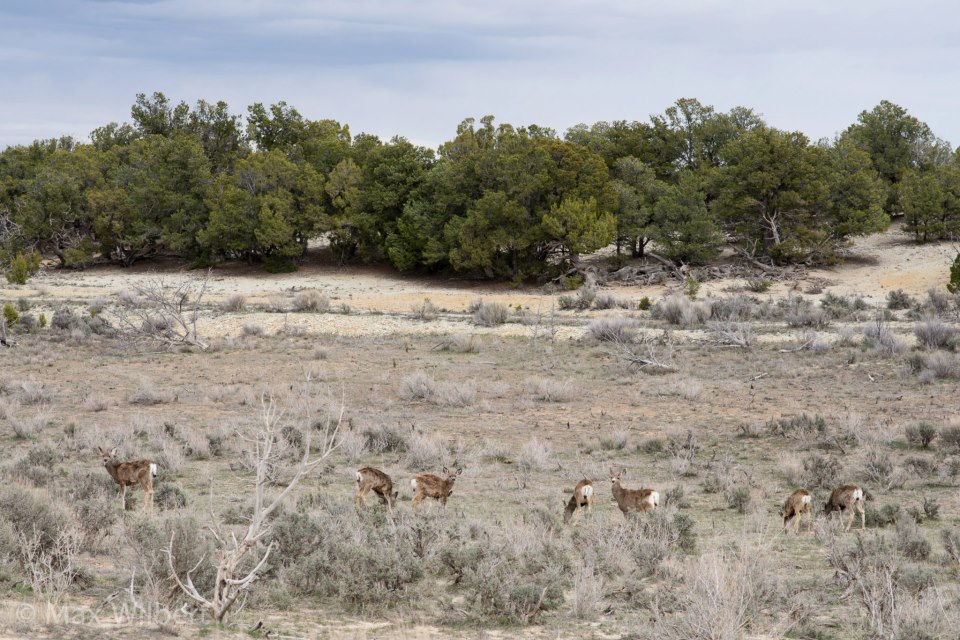
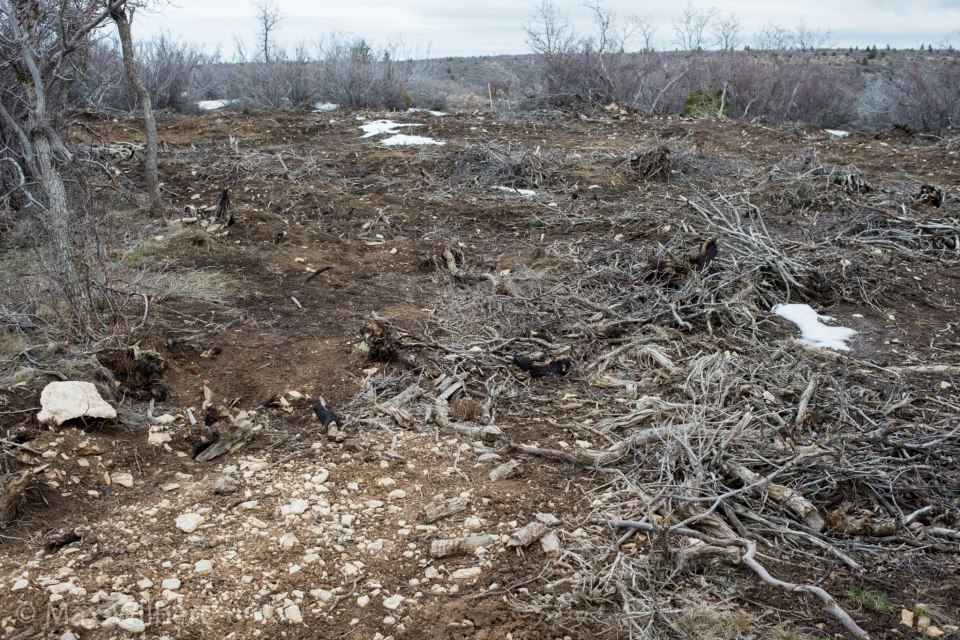
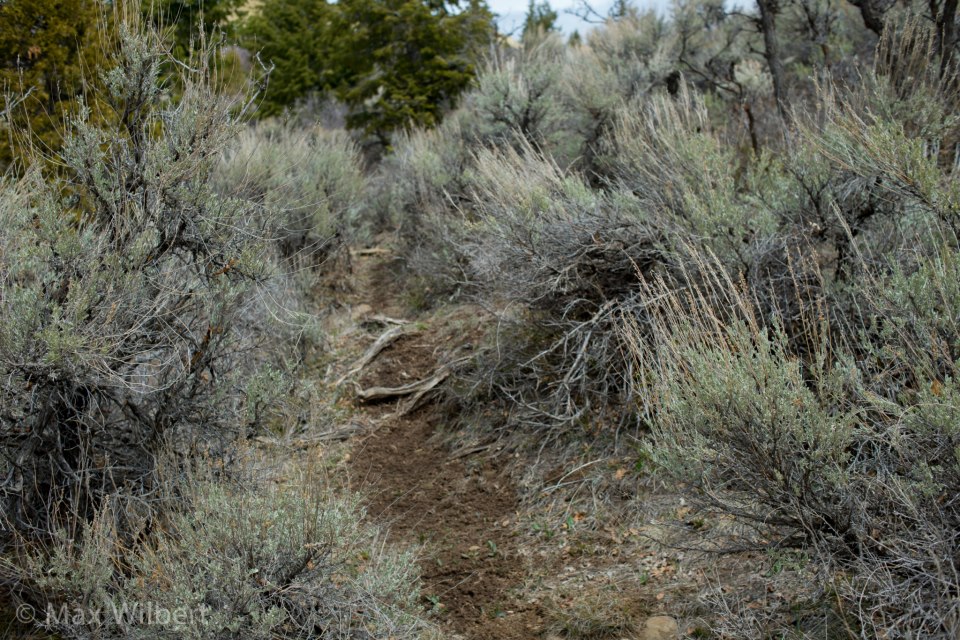
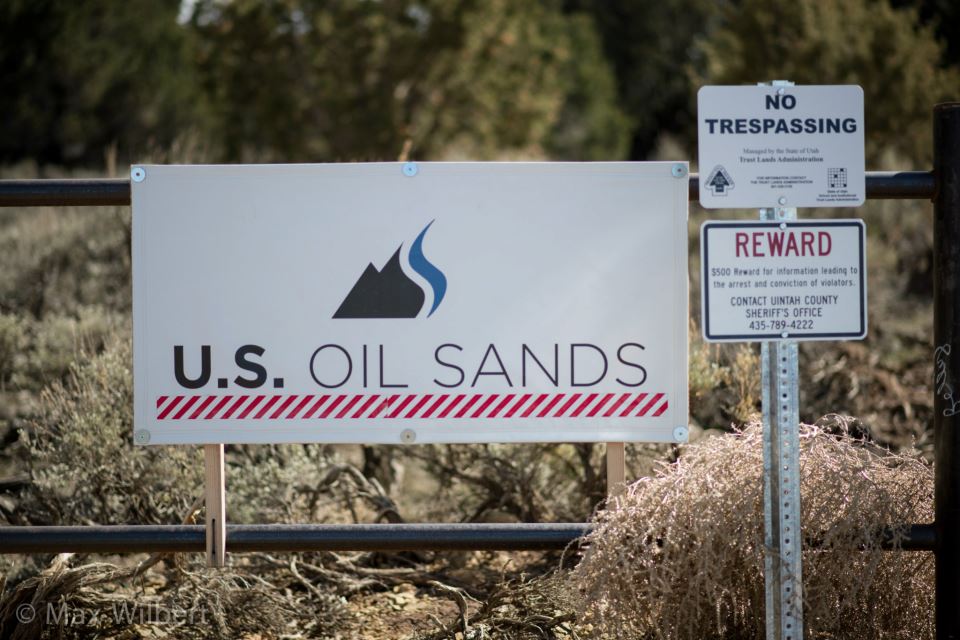
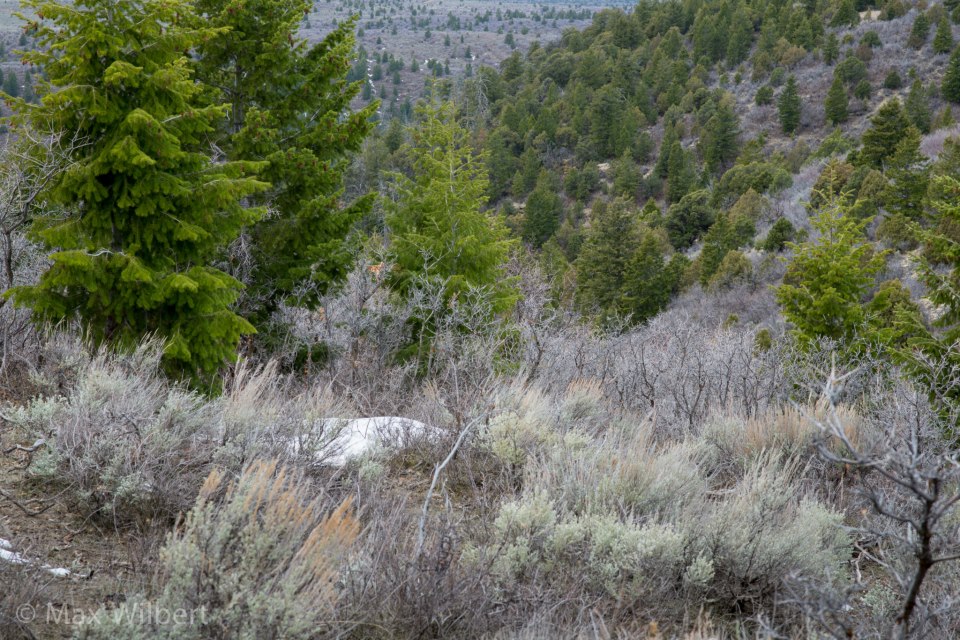
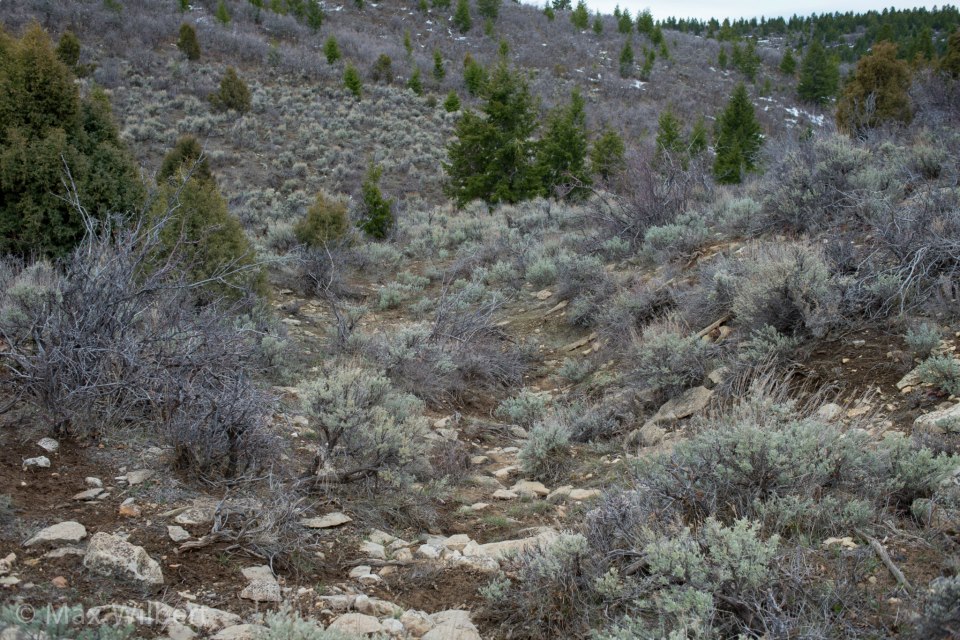
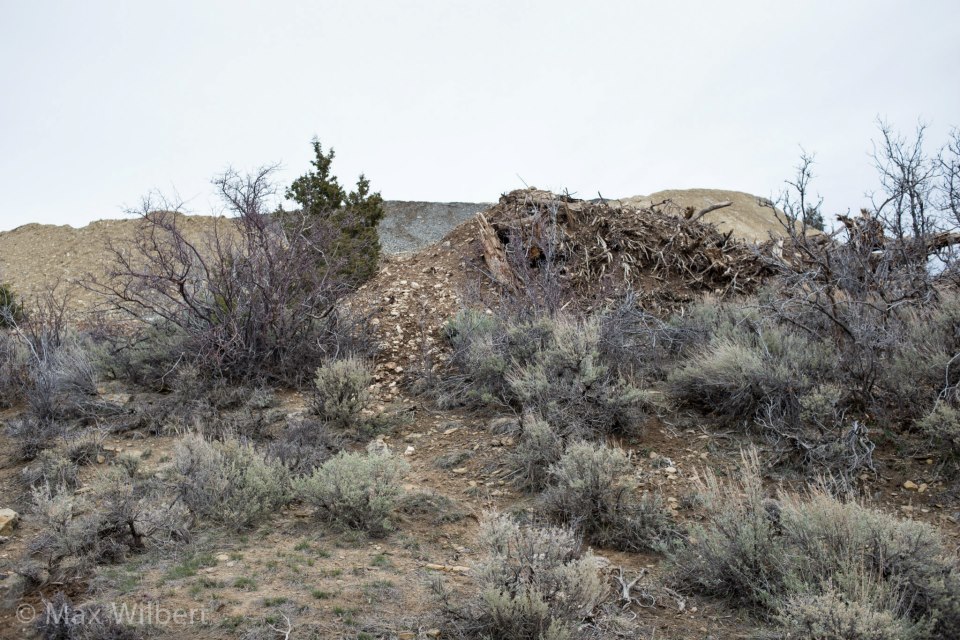
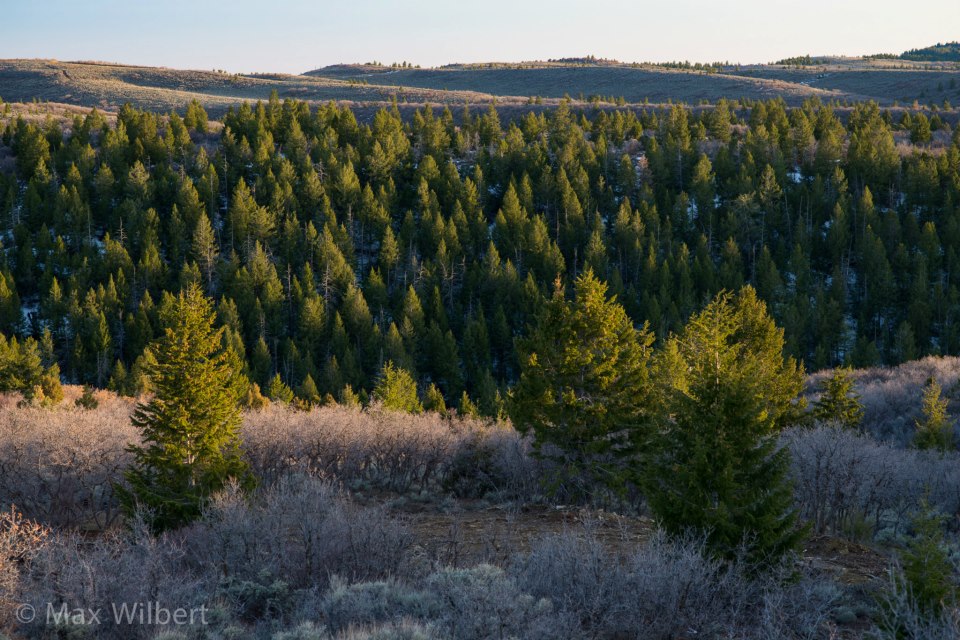
Max Wilbert is a writer and community organizer living in occupied Goshute territory otherwise known as Salt Lake City, UT. He originally hails for occupied Duwamish territory known as Seattle, and organizes primarily with the Great Basin Chapter of Deep Green Resistance to fight injustice and promote strategies towards the dismantling of industrial civilization.
You can contact Max Wilbert at greatbasin@deepgreenresistance.org














